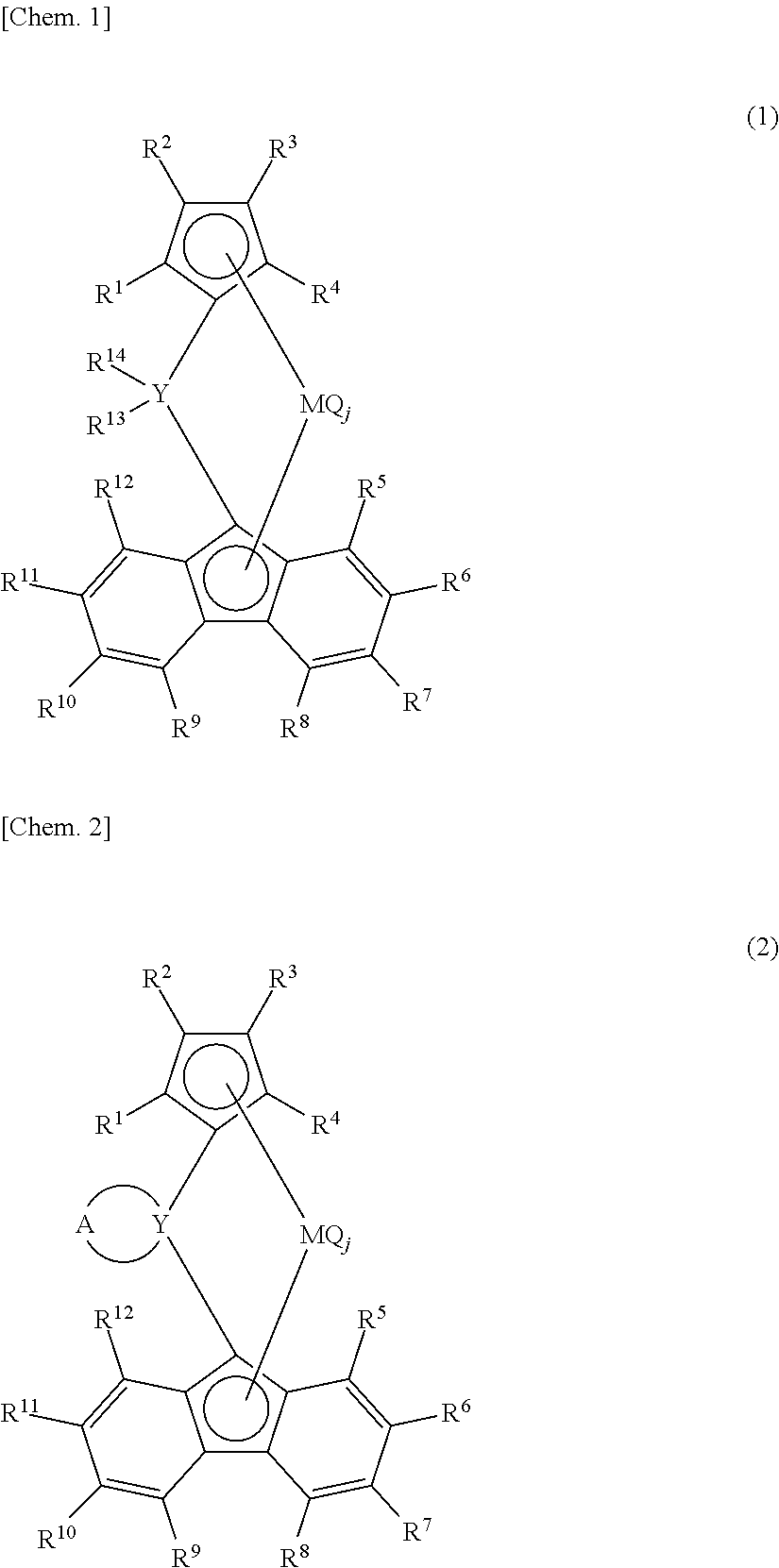4-methyl-1-pentene (co)polymer composition, and film and hollow molded product composed of the composition
a polymer composition and polymer technology, applied in the direction of thin material handling, transportation and packaging, etc., can solve the problems of poor elongation, toughness and stretchability, general poor stretchability of (co)polymer, etc., and achieve excellent elongation and toughness, excellent heat resistance and electrical properties, excellent transparency, electrical properties and dimensional stability
- Summary
- Abstract
- Description
- Claims
- Application Information
AI Technical Summary
Benefits of technology
Problems solved by technology
Method used
Image
Examples
synthesis example 1
Production of 4-Methyl-1-Pentene (Co)Polymer (A)
[0537]In accordance with the process of Comparative Example 7 or Comparative Example 9 of WO 2006 / 054613, 4-methyl-1-pentene polymers (A-1) to (A-3) having properties shown in Table 1 were obtained by changing the proportions of 4-methyl-1-pentene, 1-decene, 1-hexadecene, 1-octadecne and hydrogen.
synthesis example 2-1
Production of 4-Methyl-1-Pentene Copolymer (B1-1)
[0538]In a SUS autoclave of 1.5 liter volume equipped with a stirring blade and having been thoroughly purged with nitrogen, 750 ml of 4-methyl-1-pentene was introduced at 23° C. In the autoclave, 0.75 ml of a 1.0 mmol / ml toluene solution of triisobutylaluminum (TIBAL) was introduced, and the stirrer was rotated.
[0539]Next, the autoclave was heated up to an internal temperature of 60° C. and pressurized with propylene so that the total pressure might become 0.15 MPa (gauge pressure). Subsequently, in the autoclave, 0.34 ml of a previously prepared toluene solution containing 1 mmol (in terms of Al) of methylaluminoxane and 0.005 mmol of diphenylmethylene(1-ethyl-3-t-butylcyclopentadienyl)(2,7-di-t-butylfluorenyl)zirconium dichloride was forcibly introduced with nitrogen, and polymerization was initiated. In the polymerization reaction, temperature control was carried out so that the autoclave internal temperature might become 60° C. 6...
PUM
| Property | Measurement | Unit |
|---|---|---|
| Tm | aaaaa | aaaaa |
| Tc | aaaaa | aaaaa |
| density | aaaaa | aaaaa |
Abstract
Description
Claims
Application Information
 Login to View More
Login to View More - R&D
- Intellectual Property
- Life Sciences
- Materials
- Tech Scout
- Unparalleled Data Quality
- Higher Quality Content
- 60% Fewer Hallucinations
Browse by: Latest US Patents, China's latest patents, Technical Efficacy Thesaurus, Application Domain, Technology Topic, Popular Technical Reports.
© 2025 PatSnap. All rights reserved.Legal|Privacy policy|Modern Slavery Act Transparency Statement|Sitemap|About US| Contact US: help@patsnap.com



